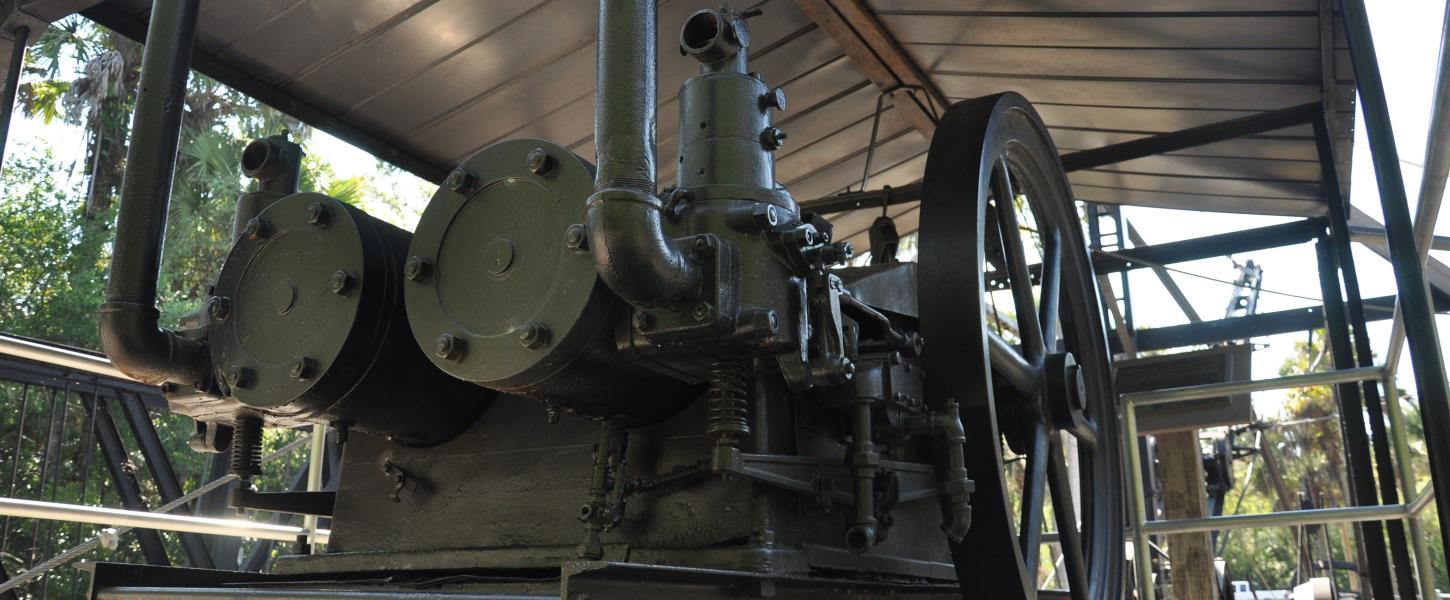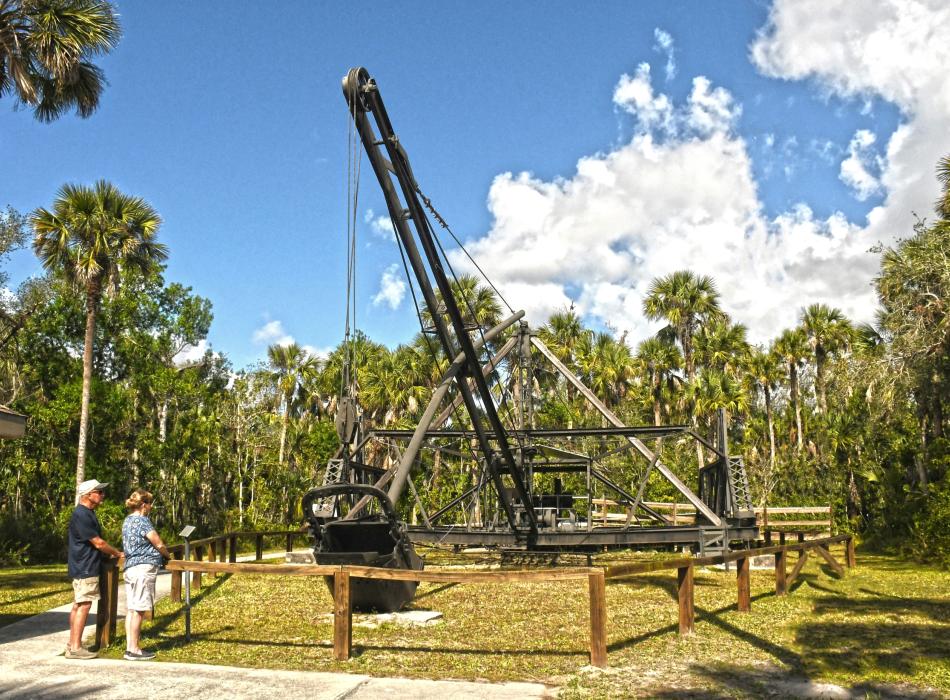Bay City Walking Dredge

The Bay City Walking Dredge was a machine operated six days per week by two men named Meece Ellis and Earl Ivey. They alternated working 10-hour shifts each day running the machine. They often worked in the sweltering heat with swarms of mosquitoes flying about and biting them. Ellis and Ivey, along with the rest of the dredge crews, lived on floating barges or trailers pulled by tractors through the Everglades.
The highway required a solid foundation of limestone. The limestone, which lied underneath a thick layer of muck, had formed out of an ancient seabed. It was the duty of the dredge men to move the limestone onto a spoil bank after it had been blasted apart. From this continuous pile of muck and rock, other work crews formed the road bed by breaking up and compacting the fill.
Construction of the Tamiami Trail began around 1915, but World War I diverted attention and funding from the project.
A renewed interest came about in the early 1920s, and by the efforts of the Chevalier Corporation on the east coast and by Barron Gift Collier on the west coast, the grueling process of building the Tamiami Trail began once again.
Collier invested much of his personal fortune, earned in the trolley-car advertising business, into land, workers and equipment in order to build a highway for the west coast. With much foresight he predicted that a major boom in development would occur following the construction of the Tamiami Trail. Barron Collier, being the businessman that he was, intended to play a key role in the development of Southwest Florida.
It was through the efforts of such individuals as Barron Collier, Meece Ellis, and Earl Ivey that the Tamiami Trail was completed in 1928. Many said the road across the Everglades was not possible but the impossible had been done.
In February 1994, the American Society of Mechanical Engineers honored the Bay City Walking Dredge for its historical significance. The organization named the machine a National Historic Mechanical Engineering Landmark.
In May 2013 the Bay City Walking Dredge was again honored and officially listed in the National Register of Historic Places.
